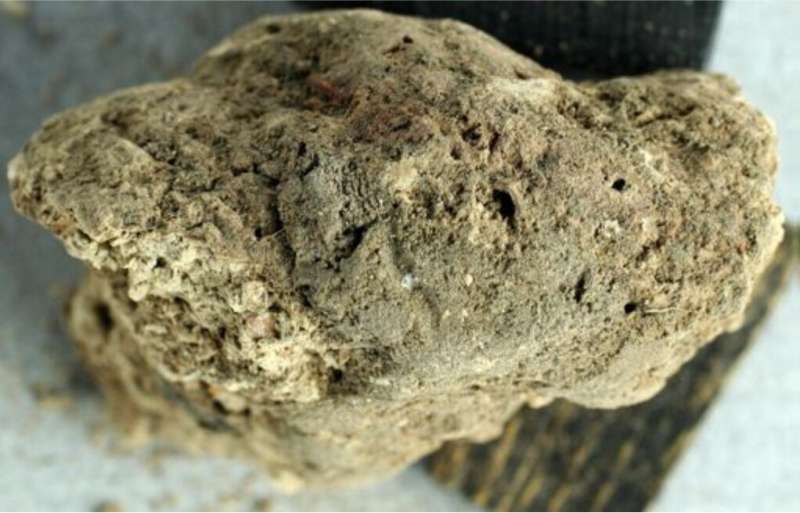Using a multipronged approach to investigate the diet of ancient dogs

Coprolites, or fossilized feces, are often used to understand the dietary preferences of ancient civilizations. However, the samples are often contaminated, making the analysis difficult. A new study, published in Scientific Reports, uses different techniques to improve the investigation of coprolites.
"We have been interested in analyzing coprolites for many years. We have attempted to extract DNA and look at the microbiome before, but the tools were not as robust," said Ripan Malhi (GNDP/GSP/IGOH), a professor of anthropology. "As far as I know, this is the first time anyone has used multiple approaches to provide a snapshot of the daily diet, health, and the long-term trends in ancient dogs of the Americas, all in one study."
The samples were recovered from Cahokia, near modern St. Louis, Missouri. At its peak, Cahokia was a large urban center with a population greater than London or Paris. Several other investigations have shown that there is an overlap between the diet of dogs and humans, either because the dogs were fed the same food or because they ate human food scraps. Therefore, investigating coprolites also provides an insight into human health and diet.
"Initially, the residents were growing crops such as squash and sunflowers. As the city got bigger, it is believed that the diet shifted to maize. Our analysis suggests the same since we saw that some of the dogs were also eating maize," said Kelsey Witt, a postdoctoral researcher at Brown University and former Ph.D. student in the Malhi lab.
The maize samples were examined using stable isotope analysis, which is used to measure different forms of carbon in a sample. Depending on the carbon concentrations, one can identify what kind of plant was consumed. The researchers also investigated the animal and plant remains in the coprolites to show that walnuts, grapes, a variety of fish, and duck were a part of the dogs' diet.
The researchers also used DNA sequencing to determine the microbiome—the community of microbes—of the coprolites. "The technique we used came out in 2020. It helped us verify whether the samples were from dogs or humans, as well as confirm general aspects of diet which can only be done by comparing the microbiomes," said Karthik Yarlagadda, a Ph.D. student in the Malhi lab.
Although the techniques are novel and more sensitive, coprolites are still challenging to study for a number of reasons. The DNA has already passed through the digestive process in the dogs and has therefore been broken down. Furthermore, since the samples are ancient, the extracted DNA is degraded to a large extent due to weathering.
"One of the biggest challenges we faced was dealing with sample contamination," Yarlagadda said. "These samples were deposited a thousand years ago. After that, the environment changed, certain microbes died off, and new microbes took over. All these factors complicate the analysis."
The researchers are working with the Indigenous communities to further understand what the diets looked like in their ancestors. "Since there are a lot of limitations to our research, talking to community members about what their ancestors ate and how they interacted with dogs helps us understand our results better," Witt said.
More information: Kelsey E. Witt et al, Integrative analysis of DNA, macroscopic remains and stable isotopes of dog coprolites to reconstruct community diet, Scientific Reports (2021). DOI: 10.1038/s41598-021-82362-6
Journal information: Scientific Reports
Provided by Carl R. Woese Institute for Genomic Biology, University of Illinois at Urbana-Champaign





















